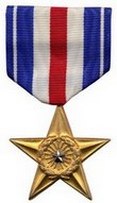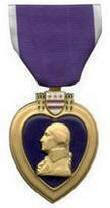Earl Rapp
Ballplayers Wounded in Combat
| Date and Place of Birth: | May 20, 1921 Corunna, MI |
| Date and Place of Death: | February 13, 1992 Swedesboro, NJ |
| Baseball Experience: | Major League |
| Position: | Outfielder |
| Rank: | Sergeant |
| Military Unit: | Company B, 83rd Chemical Mortar Battalion US Army |
| Area Served: | European Theater of Operations |
Earl W. Rapp was born on May 20, 1921, in Corunna, Michigan, about 90
miles northwest of Detroit. At a young age his family moved to
Swedesboro, New Jersey, where he lettered at Old Swede High School in
baseball, basketball, football and track.
Rapp was originally signed by Phillies’ scout Jocko Collins in 1940, and
played for the Wausau Timberjacks of the Class D Northern League,
batting .316 in 62 games.In 1941, the left-handed hitting outfielder was
sent to the Red Sox and played 37 games with the Oneonta Indians of the
CLass C Canadian-American League before being sent to the Tigers
organization and playing 67 games with the Jamestown Falcons of the
Class D PONY League.
In 1942, Rapp moved up the ladder to the Tigers’ Class AA International
League affiliation at Buffalo. However, the competition was too stiff
for the youngster and he spent the bulk of the year with the Hagerstown
Owls of the Class B Inter State League where he hit .284 in 137 games.
For the third successive year Rapp was with a team that reached the
playoffs but tragedy almost struck on September 17. Rapp, manager Dutch
Dorman and four other Hagerstown players were hurt when their station
wagon overturned after a tire blew out. They were returning from
Wilmington, Delaware, where they had a play-off series with the
runner-up in the pennant race. The accident occurred near Lancaster,
Pennsylvania, and all six players suffered lacerations and brush burns.
On September 28, 1942, Rapp entered military service with the Army in
Baltimore, Maryland. He initially served near Huntsville, Alabama then
trained with the 83rd Chemical (Motorized) Battalion at Camp Gordon in
Augusta, Georgia. While at Camp Gordon, he continued to display his
athletic abilities in baseball, basketball, football, track, boxing and
table tennis.
Late in 1943, Rapp embarked for Europe where he served 556 days as a
sergeant. In early 1945, Sergeant Rapp earned the Silver Star for his
part in the battle of the Colmar Pocket - a three-week battle where
Allied forces overwhelmed the German Nineteenth Army in bitter,
extremely cold winter fighting over terrain that offered practically no
cover for attacking forces. Rapp's platoon of 48 men had been cutoff
near the little French town of Riquewihr. The lieutenant in command
ordered them to dig fox holes and lie low until early dawn to make a
break for their own lines but almost immediately a German sniper killed
the officer with a bullet through the temple. That put Sergeant Rapp in
command.
"The only way we had a chance was to jump out of our holes, one man at a
time, run like mad for ten yards, then hit the ground before the SS
sharpshooters got the range," he told The Sporting News on August 28,
1946. One by one the young American soldiers made a run for safety as
his mates offered covering fire. "Strange what thoughts run through your
mind when you're hugging the ground and just waiting for the hour. I
thought about baseball, and how hard I'd work and go all-out if I ever
had the opportunity to go to spring training again."
The last GI to leave his foxhole was Rapp. No one covered him. "I never
ran so hard in my life. You never know how hard you can run until your
life is at stake. I thought that night that I'd never play baseball
again … and that's what I thought mostly about… I said 'Rapper, if you
ever get through this, you'll play baseball like you never played it …
hustle … and fight every pitcher … and learn to hit lefthanders.'” Only
seven men made it back to safety.
In addition to the Silver Star, Sergeant Rapp also earned the Purple
Heart when he was wounded in the tendons behind the knee, which would
hamper his running ability and affect his baseball career.
Rapp returned home in November 1945. He joined Buffalo in 1946, but was
out of condition after serving in the military for three years and in
May was optioned to Detroit’s farm team in the Class A Eastern League –
the Williamsport Grays - where he hit .332 in 64 games. It hadn't taken
long for Rapp to find his stride. He was recalled by Buffalo and in
August hit one of the International League's most dramatic home runs of
1946 when he unloaded a fence-clearing shot into Woodlawn Avenue with
the bases loaded and two out in the ninth to defeat Jersey City, 4-3.
Rapp remained with Buffalo in 1947, batting .294 with 16 home runs and
80 RBIs. He played for the Seattle Rainiers of the Pacific Coast League
in 1948, and made his major league debut with the Detroit Tigers on
April 28, 1949, with one plate appearance against the St. Louis Browns
in which he drew a walk. On May 7, Rapp was traded to the Chicago White
Sox for Don Kolloway. He played 19 games for the White Sox and batted
.259 before being sent as part of a deal to the Oakland Oaks back in the
Pacific Coast League.
The 6-foot-2 outfielder remained with Oakland in 1950, batting .314 with
24 home runs and 145 RBIs, and a trade to the New York Giants on July 1,
1951, marked Rapp’s return to the major leagues. He played 13 games with
the Giants until being selected off waivers by the St. Louis Browns in
September. Rapp came alive with the Browns and hit .327 in 26 games.
Despite a promising end to the 1951 season, Rapp got off to a slow start
with the Browns in 1952. He hit just .143 over 30 games and was traded
to the Senators in June. He played a career-high 46 games with
Washington and batted a respectable .284 to end his major league career,
leading the American League with 54 pinch-hit appearances and 10
pinch-hits.
Rapp was far from done with professional baseball, however. He was back
in the Pacific Coast League in 1953 – this time with the San Diego
Padres and remained with that club until 1957. He hit .311 in 1953 with
24 home runs and 108 RBIs; following that with a .337 average in 1954
and another 24 homers. In 1955, he hit 30 home runs with 133 RBIs and
hit an even .300 in 1956.
Rapp coached in the minors in 1958 and was hired as a scout for Houston
from 1960 to 1977. For the next five years he scouted for the Kansas
City Royals and and was responsible for the signing of pitcher Mark
Gubicza. He was a scout with the Montreal Expos from 1983 to 1987, and
the Cincinnati Reds the following two years. He retired after undergoing
heart surgery, but later worked as a consultant for the Toronto Blue
Jays, a position he held at the time of his passing, aged 70, on
February 13, 1992.
Earl Rapp, who is buried at St. Joseph Cemetery, Swedesboro, New Jersey,
was inducted in the Pacific Coast League Hall of Fame in 2004.
Date Added December 21, 2017
Can you add more information to this biography and help make it the best online resource for this player? Contact us by email
Read Baseball's Greatest Sacrifice Through The Years - an online year-by-year account of military related deaths of ballplayers
Baseball's Greatest Sacrifice is associated with Baseball Almanac
Baseball's Greatest Sacrifice is proud to be sponsored by


